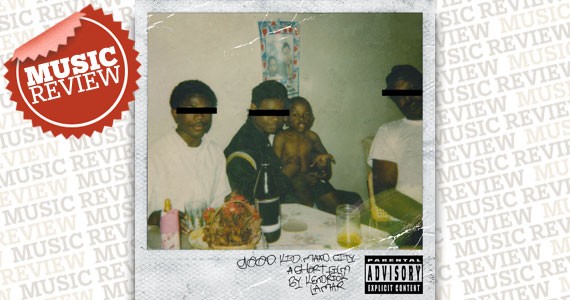Kendrick Lamar
good kid, m.A.A.d. city (Interscope)
[
{
"name": "Air - Inline Content - Upper",
"component": "26908817",
"insertPoint": "1/4",
"requiredCountToDisplay": "8"
},{
"name": "Air - Inline Content - Middle",
"component": "26908818",
"insertPoint": "1/2",
"requiredCountToDisplay": "8"
},{
"name": "Air - Inline Content - Lower",
"component": "26908819",
"insertPoint": "100",
"requiredCountToDisplay": "1"
}
]
Regionality has always been a prominent theme in hip-hop, as rappers’ hometowns are often integral to their entire being. An example is N.W.A.’s association with Compton, CA, a city known for intense crime culture and gangster rap. For decades this reputation remained, but a new voice has emerged that challenges the city’s image. His name is Kendrick Lamar. Brimming with kaleidoscopic variety,good kid, m.A.A.d. city is this year’s freshest rap record. “Bitch, Don’t Kill My Vibe” bubbles and flows like a lost André 3000 track, ’90s R&B bridges with Drake on “Poetic Justice” and Lamar bleakly foreshadows his own death within the 12-minute epic, “Sing About Me, I’m Dying of Thirst.” Uninterested in safe rap formulas, Lamar stretches tracks beyond five minutes, shifts gears and tempos with abandon, and distorts his voice throughout. But the real story of good kid, m.A.A.d. city is just that: the story. Growing up in a crime-infested town, Lamar struggles with relationships, feels the numbness of fame and ultimately finds god, peace and purpose. Lamar is as complicated as Compton itself, and though he sometimes depicts himself as sexist and megalomaniacal, these flaws give the record its character and authenticity. We live in an ever-shrinking world, and Lamar is leading rap into our globalized future. Still, closing the record with “Compton” reveals that his heart lies within his humble beginnings. As much as Lamar now belongs to the world, he first and foremost belongs to Compton, and it’s beginning to look like Compton also belongs to him.

